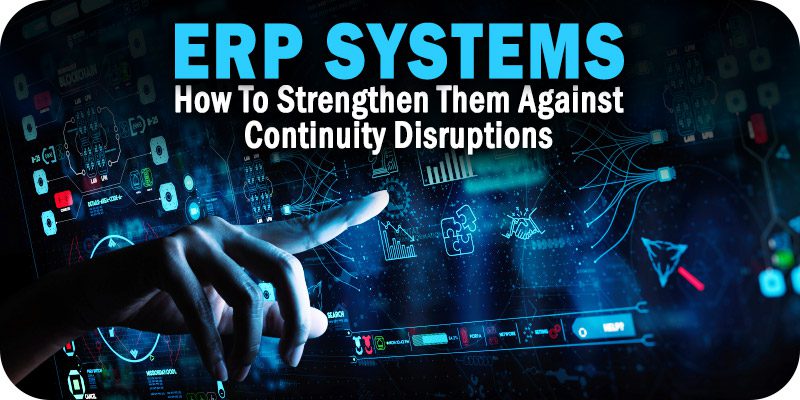How to Strengthen ERP Systems Against Continuity Disruptions


As part of Solutions Review’s Contributed Content Series—a collection of articles written by industry thought leaders in maturing software categories—Maziar Adl, the Co-Founder and Chief Technology Officer at Gocious, explains how companies can strengthen their ERP systems from continuity disruptions.
Downturns and disasters are inevitable for any business, even complex business and manufacturing operations using data-driven technology tools to optimize efficiency. But the difference between survival and closure can come from preparedness and planning. When a disruption happens, downtime costs businesses a staggering $163,674 per hour, according to research by Datto and the Aberdeen Group. This estimated cost also varies depending on the business’s size and the operations’ scale.
Despite this very real cost—and recent global events like the COVID pandemic still at the top of mind—many leaders don’t have detailed continuity plans in place. This is especially important for businesses deploying Enterprise Resource Planning (ERP) systems to integrate and optimize their business’s core processes.
Here’s why leaders and Product Managers should still consider an ERP and how they can adopt continuity plans more successfully against possible single-point system failures.
The Pros of ERP
An ERP system is designed to support an enterprise’s critical activities in an integrated fashion, using advanced computational capabilities and artificial intelligence to streamline data streams. ERP systems combine key operations elements, including product planning, finance, and accounting functions, inventory control, order management, interaction with suppliers and customers, and human resources and customer service capabilities. In effect, an ERP can be an enabling function for Product Managers, increasing communication and alignment across stakeholders.
Internally, ERP systems remove silos between teams and stop the roadblocks that silos traditionally create. ERP allows teams to focus on their projects without doing extra work in tasks like updating documents and spreadsheets across different groups.
Externally, ERP systems help companies solve challenging, multi-layered problems. Product managers can pivot efficiently by digitally modeling changes to a product design, reducing the strain on the company’s time and resources. Alternate third-party partners and suppliers can be explored simultaneously from the product development, business operations, and financial end.
Think Long-Term
Many leaders may be hesitant to integrate ERP, thinking it may be too powerful a tool for the needs and scale of their operations. But as a company scales and multiple products, teams and silos become table stakes for bringing a product to market, and traditional tools can’t keep up in such a dynamic environment.
However, adopting an ERP creates dependencies on a single system where there was once more distributed risk across systems. Product Managers must maintain a business continuity plan in the circumstance where their ERP becomes a point of failure.
Considerations for Effective Continuity
If a disruption in continuity does happen, here are three ways to strengthen the system:
Transparency
Lean into the silo-breaking structure of ERP and fully embrace an environment of transparency across the business or system. With transparency, those within your system should be able to map and understand the product or business strategy and be able to provide feedback on whether the plan is on track or not.
Checks and balances
Ensure you’re receiving frequent feedback to view potential disruptions of the entire business. This is effective when a system or cadence for getting feedback is established and understood by all its members. That way, monitoring for disruptions is a scheduled effort, and action can even be taken before a disruption happens.
Collaboration
Set up channels for collaborative problem-solving and have a single source of truth to make sure system members can work based on the same information. Restoring continuity hinges on a team or system’s ability to work together efficiently.
Stay Aligned From the Start
As with any significant change to the business, a crucial step in implementing a successful continuity plan with an ERP is ensuring the C-suite is aligned. All executives should be fully on board with the strategy to ensure a continuity plan takes root. Months or even years may pass before the benefits of these advanced planning strategies start to take effect, so consistency is critical. Remember that unification at the organization’s top keeps business running smoothly in good times and amid change or crisis.


























